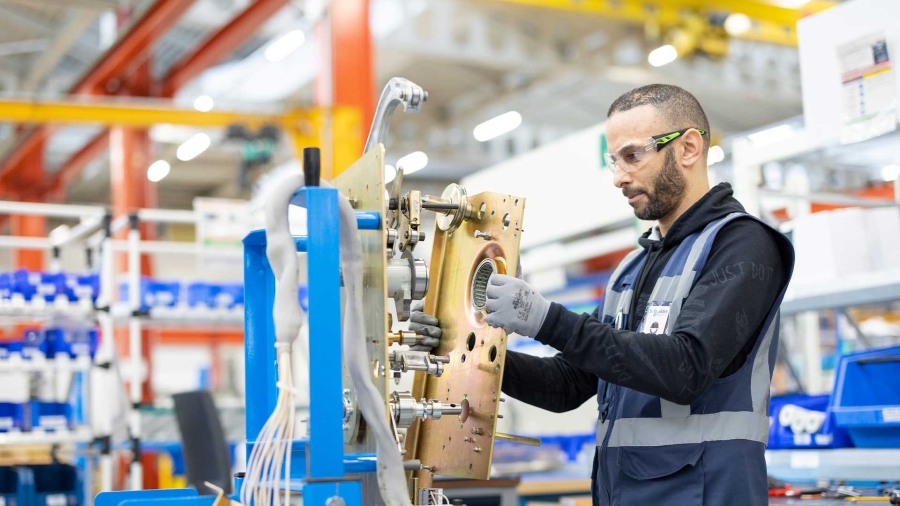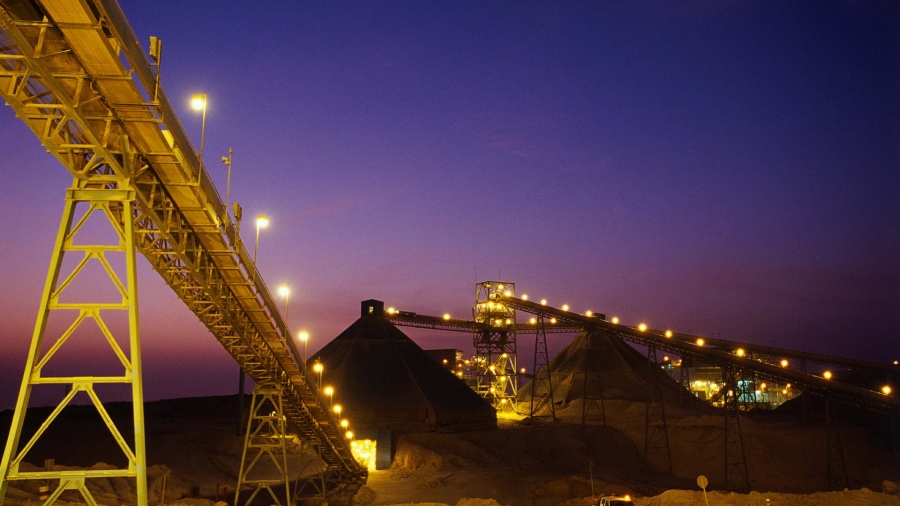Yet even as the world wrestled with Covid-19 and its consequences, industry stubbornly marched forward—and, finally, into recovery. We may never “return to normal,” but that doesn’t mean we can’t get back to the business of doing business. For many, recovery is an opportunity to accelerate digital transformation efforts and to actualize years of planned technological advancement in a matter of months. In fact, according to a 2020 Forbes Insights survey, 80% of CEOs said Covid-19 accelerated the digitalization of their operations, and 64% said the pandemic accelerated the creation of new digital business models and revenue streams.
With this shift to digital, industrial leaders can create a more technologically advanced, digital-first future for the next generation and beyond. Here are five steps to do just that.
01 AUTOMATE TO OPTIMIZE
Thanks to technological innovations in both hardware and software, new approaches to energy management are now possible. Moving away from traditional centralized grid systems, these innovative models feature two-way energy flows that are connected across decentralized networks of microgrids. By collocating both generation and consumption, performance gains are seen throughout the entire operation.
To realize their full potential, though, these new distributed networks must feature fully automated processes that bind everything together. It’s critical to build always-on access to the entire energy grid, which helps optimize costs over a plant’s lifecycle by shortening production cycles and reducing its carbon footprint. This is the next generation of automated energy management.
02 CONNECT TO THE CLOUD
The cloud provides unlimited computing power on demand, and it’s often more efficient and convenient than hosted facilities. But for industrial leaders, the cloud is another tool to improve performance and provide insights—not an end solution in and of itself.
The key is connection, not migration. From the shop floor to the control room, thousands of end points produce vitally important data around the clock. Creating actionable insights from these vast sets of data can present a real challenge. By connecting these end points to a cloud-based control room, industry gains immediate access to artificial intelligence, machine learning and other technological resources for making the most of Big Data.
03 UNIFY TEAMS AND TOOLS
The next step revolves around bringing together people, processes and assets to create an agile, digital workplace that’s collaborative and focused on growth. Modernizing and digitalizing brownfield sites may seem like a recipe for downtime, but that’s no longer the case. It is indeed possible to modernize and digitalize without taking the house down to the studs, so to speak. Even operations saddled with older systems can move toward software-centric solutions, built on open standards, that eliminate silos and ensure information flows across teams, departments and functions.
04 DIGITALIZE YOUR SUPPLY CHAIN
Much in the same way that a common customer experience is good for business, so too are supply chains that operate within fully digitalized, unified ecosystems. When we connect suppliers, customers and partners end-to-end, we bring greater visibility and intelligence to each of their processes. This, in turn, makes it possible to optimize operations, predict interruptions and prevent failures. A supply chain, of course, doesn’t carry just physical materials. Modern supply chains provide raw data in the form of IoT signals, digital inputs, metadata and so forth. Whether it’s mining, oil or e-commerce, nearly all multisite companies are managing multiple supply chains; to maximize visibility and flexibility, they must be unified in a single view.
05 STRENGTHEN CYBERSECURITY
Although mentioned last in this five-step transformational journey, cybersecurity is no doubt the most important element. With industrial operations facing thousands of cyber intrusion attempts a day—one utility even reported 10,000 attempts per month—the stakes are nearly impossible to measure. With stakes this high, managing current and future cybersecurity risks has to be the foundation of any digital strategy as well as every risk-management strategy and matrix. After all, what good is a radical, revolutionary digital transformation if it’s vulnerable to threats?
If companies want to protect and improve their overall business performance, they need to proactively and continually manage their cyber risks across the operations lifecycle, regardless of where they are on their digital journeys. It’s no longer enough to simply install antivirus software and require stronger passwords. Taking advantage of new business models, revenue streams and other opportunities in the digital age requires a holistic, dynamic approach to cybersecurity, one that allows companies to continually identify, mitigate and reduce—even eliminate—current and future risks.
Start TodayAs the adage goes, “The best time to plant a tree was 20 years ago. The second-best time is now.” The same might be said for digital transformation. As we move forward toward recovery, leaders can build not only stronger, more resilient companies but also a better, more sustainable future for us all. If your company hasn’t already begun its innovation efforts, it’s not too late. But the time to start is indeed now.
Find out more about how Schneider Electric is making industries of the future eco-efficient, agile and resilient through open, software-centric industrial automation.














